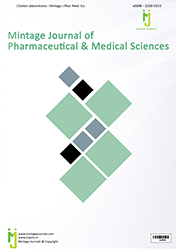Abstract
A GENETIC STUDY TO DIFFERENTIAL HA/CA MRSA ISOLATED FROM CLINICAL CASES IN IRAQ HOSPITALS
Author(s): ISRAA MOHAMED SAFI AL-KADMY
Methicillin-resistant Staphylococcus aureus (MRSA) has been a major cause of nosocomial infections since the 1960s . Currently, MRSA is divided into two subgroups: the healthcare associated MRSA (HA-MRSA) and community associated MRSA(CA-MRSA), CA-MRSA infections have been increasing. The most common of these infections present in soft skin. The aim of this study to different between CA and HA MRSA in clinical isolates of Baghdad hospitals. Methods: clinical isolates were collected from patients with different infections, Simple laboratory testing followed by the complementary API Staph, followed by antibiotic sensitivity and D-test, and finally by using PCR technique, detection of this genes : mecA, PVL, SCCmec IVandV. Results: A total of 105 S.aureusfound 104 methicillin-resistant Staphylococcus aureus (MRSA) strains, after a D-test , S.aureusdivided to two group: CA and HA –MRSA, where the ratio of CA 18(17.1%) out of 105 isolates, while HA reached 87(82.8%). MRSA was characterized by PCR amplification mecA gene, 104(99.04%) isolates out of 105 gave positive result, all isolates of HA carry mecA gene, while 17 out of 18 isolates of CA carry mecA gene which was CA-MRSA and one isolates was CA-MSSA . All isolates 18(100%) of CA gave positive result in risk factors PVL gene, while for detection of SCCmec IV17 (94.4%) out of 18 isolates of CA gave positive result, and finally two isolates of CA-MRSA gave positive result in SCCmec Vgene .Conclusions: This is the first report in Iraq for the emergence of CA isolates especially CA-MRSA which is responsible for the majority of infection in soft tissue and skin abscesses , are likely to be sensitive to clindamycin.

ISSN: 2320-3315
ICV :81.58

